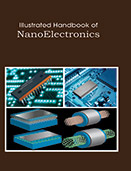Engineering and Technology

Modern technology is characterized by its emphasis on miniaturization. Perhaps the most striking example is electronics, where remarkable technological progress has come from reductions in the size of transistors, thereby increasing the number of transistors possible per chip. Nanoelectronics is one of the major technologies of nanotechnology. It plays vital role in the field of engineering and electronics. Nanoelectronics make use of scientific methods at atomic scale for developing the nano machines. The main target is to reduce the size, risk factor and surface areas of the materials and molecules. Machines under nanoelectronics process under goes the long range of manufacturing steps each with accurate molecular treatment. Nanoelectronics develop its products and circuits at super miniature level. Individual part of the machine is handled atomically. Much kind of integrated circuits are present in the nano electronic devices. These integrated circuits are known as microelectronics.
Illustrated Handbook of NanoElectronics addresses the state of the art in nanoelectronics, covering nanowires, molecular electronics, and nanodevices.
With the help of nano electronics more complex and integrated devices have been created such as nano electronic robots with self-replication, bacteria and material purifiers which automatically treat the agent or element according to the boiling points. Advanced sensors, trackers and detection apparatus are also the inventions of nano-electronics.
In this book, we have described the evolution of microelectronics toward dimensions belonging to the nanoscale area. The progresses in this field follow a road map discussed at the international level. This concerns microprocessors and memories addressed in the preceding chapter. Other aspects complement this domain, using nanotechnology, with other devices or functions giving the ability of treating, processing, and displaying information.
This Illustrated Handbook of NanoElectronics provides a comprehensive review of this exciting technology, from the fundamental science to systems design, development and applications.
Continuing to shrink the dimensions of electronic devices is important in order to further increase processor speed, reduce device switching energy, increase system functionality, and reduce manufacturing cost per bit. However, as the dimensions of critical elements of devices approach atomic size, quantum tunneling and other quantum effects degrade and ultimately prohibit the operations of conventional devices. Researchers are therefore pursuing more radical approaches to overcome these fundamental physics limitations.